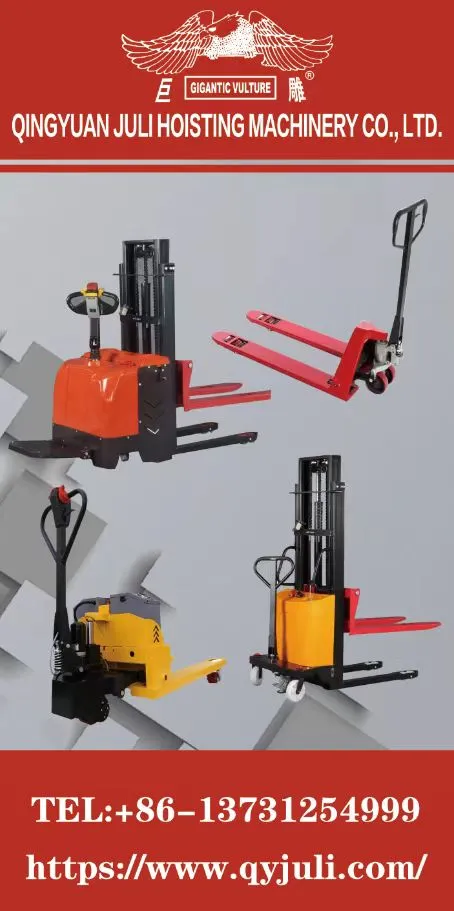Navigating the world of industrial equipment can sometimes feel overwhelming, particularly when it comes to purchasing an electric hoist. With a myriad of options and technical specifications to consider, it's essential to understand not only what makes a quality electric hoist but also how to select one that best fits your needs. This guide aims to provide insights into electric hoists for sale, focusing on key aspects that ensure credibility, reliability, and performance.

Electric hoists are indispensable tools for various industries, from construction to manufacturing, due to their efficiency in lifting heavy loads with minimal manual effort. They come in various models and capacities, each designed to handle specific weight limits and operational environments. When considering purchasing an electric hoist, it's crucial to evaluate several factors, including load capacity, lifting speed, power source, and safety features.
Load Capacity and Configuration

One of the first considerations is the load capacity of the hoist. It's important to choose a hoist that can comfortably handle the maximum load you anticipate lifting. Overloading a hoist can lead to equipment failure and pose significant safety risks.
Electric hoists are available in both fixed and trolley configurations. Fixed hoists are suitable for stationary lifting applications, while trolley hoists can move items along a beam, providing greater flexibility in a workshop or construction site environment.
Lifting Speed and Efficiency
Efficiency in operation is another critical factor. Lifting speed determines how quickly a load can be moved from point A to point B. While faster speeds can enhance productivity, it’s important to balance speed with control, especially in environments where precision is paramount. Adjustable speed controls can offer the best of both worlds, allowing for quick movement with the ability to slow down for precise placements.
Power Source
Electric hoists are typically powered by either single-phase or three-phase electricity. Single-phase hoists are more common in smaller workshops or domestic environments due to their compatibility with standard electrical outlets. Three-phase hoists offer greater efficiency and power, making them ideal for industrial settings where heavy lifting is routine. Selecting the correct power type is crucial to ensure seamless integration with existing electrical systems.
electric hoist for sale
Safety Features
Safety is paramount when choosing an electric hoist. Look for features such as overload protection, emergency stop functions, and upper/lower limit switches that prevent the hoist from moving beyond set points. Some advanced models also include thermal protection to prevent overheating, which can significantly extend the lifespan of the equipment.
Expert Recommendations
Consulting with industry experts or experienced users can provide invaluable insights into selecting the right hoist. They can offer advice based on specific use cases and share experiences about different brands or models. Additionally, reviewing certifications and compliance with industry standards, such as those set by OSHA or ISO, ensures that the hoist meets rigorous safety and quality benchmarks.
Authoritative Brands and After-Sales Support
Selecting a hoist from a reputable manufacturer can also affect your buying decision. Brands with a track record of reliability and quality typically offer better customer support and warranty options, which can be crucial in the event of a malfunction or when replacement parts are needed. Robust after-sales support and the availability of service centers also contribute significantly to maintaining operational continuity and minimizing downtime.
In conclusion, purchasing an electric hoist requires careful consideration of several key factors, from technical specifications to brand reputation. By thoroughly evaluating your needs and consulting with experts, you can make an informed decision that enhances both safety and efficiency in your operations. Remember, the right equipment not only optimizes your workflow but also ensures a safer working environment for everyone involved.








